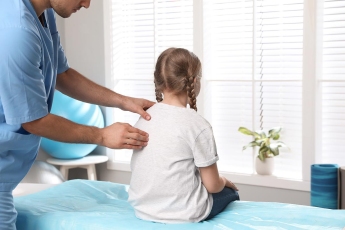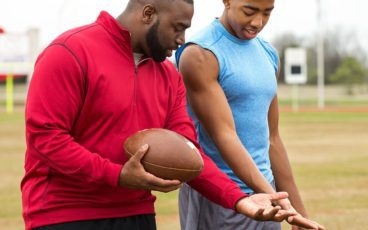If a pediatric orthopedic physician gives your child a diagnosis of Perthes disease it’s not the end of the world. First thought of as a form of childhood arthritis, Perthes disease is a actually a temporary condition that causes the hip to lose its blood supply. When the hip is not receiving the needed amount of blood, the “ball” at the top of the femur begins to die. This condition is most commonly seen in kids aged 4 to 10 years old and is much more common in boys than girls. The good news is that, with treatment, children who experience Perthes disease usually can return to their normal activities.
The Common Symptoms Of Perthes Disease
Children are great at masking pain, but there are some symptoms you child may complain about if they are developing Perthes disease. These symptoms may be a constant problem or may only occur occasionally over the course of weeks or months. The symptoms include:
- The affected hip usually becomes irritated, red, and swollen
- You child may start limping
- There may be some mild pain in the hip
- The irritation can cause the muscles to spasm, which may be painful
- Pain may even be present in the thigh, knee and groin
- As your kid starts to move the pain may get worse
- A good night sleep or rest sometimes makes the pain less intense
Treating Perthes Disease In Children
Typical treatment lasts from 18 months to over 2 years and usually involves a series of X-rays over that time. In kids between 2 to 6 years old, Perthes disease treatment usually only involves observing the condition. As the child gets older the treatment usually involves increasing their range of motion. Often a physician will prescribe using non-steroidal anti-inflammatory medications, sometimes for months. If the child is walking with a limp the pediatric orthopedist may prescribe the use of crutches or even bed rest and traction in the worst cases. Often a child needs to take part in physical therapy to help alleviate stiffness and increase their range of motion. In the most severe cases surgery may be suggested to get the ball and socket back into alignment.
Choose The Best Pediatric Orthopedic Physicians
Taking care of your kids is your primary concern as a parent. Finding the right physician to care for your child’s condition can be nerve wracking. To make it easier, take a look at our pediatric orthopedic physicians. All of the pediatric doctors at the Illinois Bone and Joint Institute understand a parent’s concerns and are ready to answer all of your questions. More importantly these physicians love to take care of kids and have some of the best bedside manners you will find in the Midwest. All of this makes us the best choice in caring for your kids’ orthopedic conditions. Start getting that old pain-free kiddo back – Schedule online today with one of our incredible pediatric orthopedic physicians.
*This content is for information only and is not intended to replace the diagnosis, treatment, or medical advice from your treating healthcare professionals. The content does not provide medical advice, does not constitute the practice of medicine or other healthcare professional services, and does not create a doctor-patient relationship. You should not rely on this information as a substitute, nor does it replace professional medical advice, diagnosis, or treatment. If you have concerns or questions, seek the advice of your healthcare professionals. If you think you may have a medical emergency, call your doctor or 911 immediately. Do not rely on electronic communications or communicate through this website for immediate, urgent medical needs. This website is not designed to facilitate medical emergencies. The use of the information is at the reader’s own risk. The links are provided for information and convenience only. We cannot accept responsibility for the sites linked or the information found here. A link does not imply an endorsement of a site.




